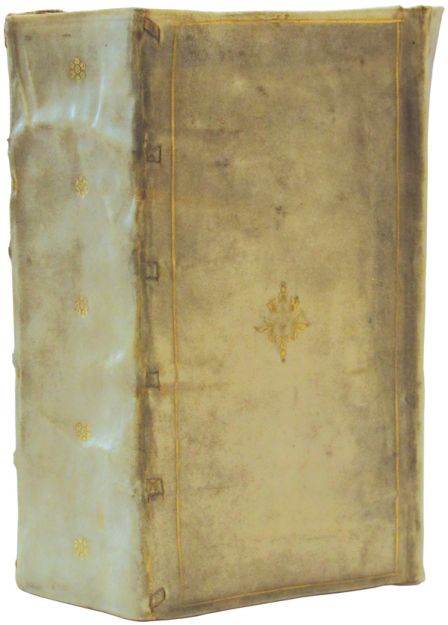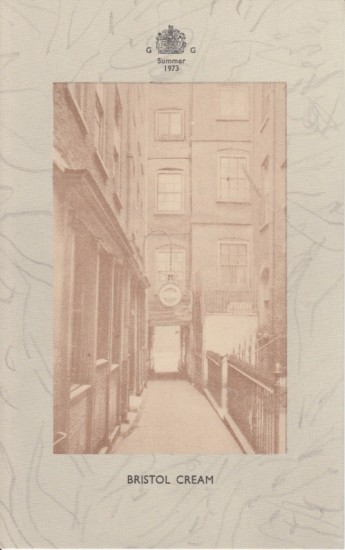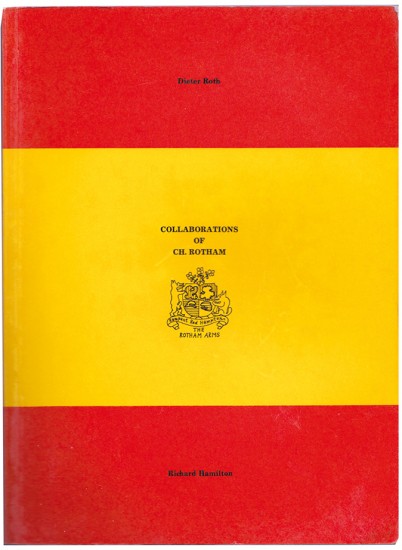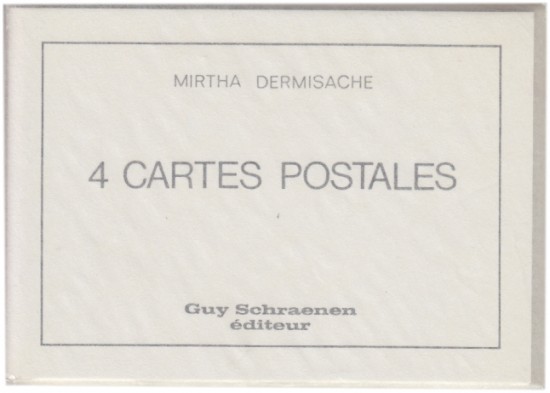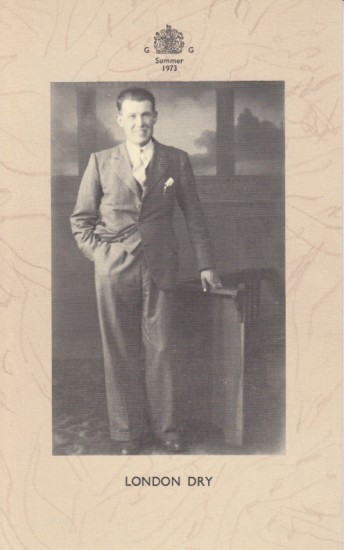Essais de Messire Michel, Seigneur de Montaigne ... Reveus & Augmentez
Montaigne, Michel de
Paris. Chez Iean Richer, ruë Sainct Iean de Latran, à l'Arbre Verdoyant. 1587
Sold
A tall copy of the third edition- the first published in Paris - of Montaigne's Essais.
The 'Essais' of Michel de Montaigne (1533 - 1592) were composed after his withdrawal from public life at the age of thirty-seven. Montaigne made the decision to dedicate himself to the Muses after the model of Plutarch (as described in De Vita Solitaria) and devoted the majority of the rest of his life to the study of the classics and to committing his thoughts to paper. The result - and it must be noted that the genre of the essay was Montaigne's particular creation - is one of the most intriguing and influential works of literary philosophy committed to paper, a work marked by the 'consummate representation of the enlightened scepticism of the sixteenth century' (PMM) and with a lasting and important legacy. From a starting point of 'Que sçay-je?', Montaigne reflects on the impossibility of the acquisition of knowledge of the fundamental nature of reality, preferring to base his conclusions on what he could learn and observe in himself and the moral conclusions that result.
The legacy of the 'Essais', both in the original French and in translation (the first English translation, by Jean Florio, was published in 1603) has been profound: Descartes, Newton and Bacon all attempted to answer or counter Montaigne, Pascal's scepticism in the 'Pensées' has been attributed to his reading of Montaigne, Rousseau's ideas demonstrate his influence and in a wider sphere, Emerson, Nietzsche, Burton, Hobbes and Locke are all indebted to him. Indeed, several passages in some of Shakespeare's later plays - 'The Tempest', 'Hamlet' and 'King Lear' most notably - bear striking similarities to passages from Montaigne.
The 'Essais' were first published in Bordeaux in 1580, consisting of two books and 94 chapters, and the popularity of the work saw a second edition published two years later also at Bordeaux by the same publisher. The third edition presented here, the first to be published in Paris by Jean Richer, is a reimpression of the 1582 edition but with corrections to the misnumeration of the chapters, the punctuation and many of the mispaginations. The edition was probably the result of an agreement between the publisher of the Bordeaux edition, Simon Millanges and Richer, as the edition lacks the Millanges' privilege which was not to expire until March 1588; it was most likely printed by Jean du Carroy who had printed Richer's 1587 'Oeuvres Morales' of Plutarch. The next published edition, issued in Paris in 1588 with an additional third book, is described on the title as the fifth edition, which has led to speculation concerning the missing fourth edition: several hypotheses have been advanced to explain this missing edition, but the most plausible (that of Jean Marchand) suggests that this 1587 edition was to be reissued with a new title as most copies have the title-page remounted (as here) or supplied in manuscript.
'Je veus qu'on m'y voye en ma façon simple, naturelle & ordinaire, sans estude & artifice; car c'est moy que ie peins. Mes defauts s'y liront au vif, mes imperfections & ma forme naifue, autant que la reuerence publique me l'a permis. Que si i'eusse esté parmy ces nations qu'on dict viure encore sous la douce liberté des premieres lois de nature, ie t'asseure que ie m'y susse tres volontiers peint tout entier, & tout nud. Ainsi, lecteur, ie suis moy mesmes la matiere de mon liure: ce n'est pas raison que tu employes ton loisir en un subject si frivole & si vain. A Dieu donc.' (Michel de Montaigne 'Au Lecteur').
'Introspectifs, volontiers ironiques, sceptiques, franchement gascons, les Essais ont su trouver un écho au-delà des frontières nationales, et, traversant sans flétrissure le temps, les questions qu'ils posent demeurent d'actualité.' (En Français dans le Texte).
'Troisième édition originale, de la plus grand rareté.' (Tchemerzine).
'L'édit. de Paris, Jean Richer, 1587 ... ne se trouve pas ... facilement.' (Brunet).
[Tchemerzine IV, 872; Sayce & Maskell 3; En Français dans le Texte 73; PMM 95 (1st edition); Brunet III, 1835].
The 'Essais' of Michel de Montaigne (1533 - 1592) were composed after his withdrawal from public life at the age of thirty-seven. Montaigne made the decision to dedicate himself to the Muses after the model of Plutarch (as described in De Vita Solitaria) and devoted the majority of the rest of his life to the study of the classics and to committing his thoughts to paper. The result - and it must be noted that the genre of the essay was Montaigne's particular creation - is one of the most intriguing and influential works of literary philosophy committed to paper, a work marked by the 'consummate representation of the enlightened scepticism of the sixteenth century' (PMM) and with a lasting and important legacy. From a starting point of 'Que sçay-je?', Montaigne reflects on the impossibility of the acquisition of knowledge of the fundamental nature of reality, preferring to base his conclusions on what he could learn and observe in himself and the moral conclusions that result.
The legacy of the 'Essais', both in the original French and in translation (the first English translation, by Jean Florio, was published in 1603) has been profound: Descartes, Newton and Bacon all attempted to answer or counter Montaigne, Pascal's scepticism in the 'Pensées' has been attributed to his reading of Montaigne, Rousseau's ideas demonstrate his influence and in a wider sphere, Emerson, Nietzsche, Burton, Hobbes and Locke are all indebted to him. Indeed, several passages in some of Shakespeare's later plays - 'The Tempest', 'Hamlet' and 'King Lear' most notably - bear striking similarities to passages from Montaigne.
The 'Essais' were first published in Bordeaux in 1580, consisting of two books and 94 chapters, and the popularity of the work saw a second edition published two years later also at Bordeaux by the same publisher. The third edition presented here, the first to be published in Paris by Jean Richer, is a reimpression of the 1582 edition but with corrections to the misnumeration of the chapters, the punctuation and many of the mispaginations. The edition was probably the result of an agreement between the publisher of the Bordeaux edition, Simon Millanges and Richer, as the edition lacks the Millanges' privilege which was not to expire until March 1588; it was most likely printed by Jean du Carroy who had printed Richer's 1587 'Oeuvres Morales' of Plutarch. The next published edition, issued in Paris in 1588 with an additional third book, is described on the title as the fifth edition, which has led to speculation concerning the missing fourth edition: several hypotheses have been advanced to explain this missing edition, but the most plausible (that of Jean Marchand) suggests that this 1587 edition was to be reissued with a new title as most copies have the title-page remounted (as here) or supplied in manuscript.
'Je veus qu'on m'y voye en ma façon simple, naturelle & ordinaire, sans estude & artifice; car c'est moy que ie peins. Mes defauts s'y liront au vif, mes imperfections & ma forme naifue, autant que la reuerence publique me l'a permis. Que si i'eusse esté parmy ces nations qu'on dict viure encore sous la douce liberté des premieres lois de nature, ie t'asseure que ie m'y susse tres volontiers peint tout entier, & tout nud. Ainsi, lecteur, ie suis moy mesmes la matiere de mon liure: ce n'est pas raison que tu employes ton loisir en un subject si frivole & si vain. A Dieu donc.' (Michel de Montaigne 'Au Lecteur').
'Introspectifs, volontiers ironiques, sceptiques, franchement gascons, les Essais ont su trouver un écho au-delà des frontières nationales, et, traversant sans flétrissure le temps, les questions qu'ils posent demeurent d'actualité.' (En Français dans le Texte).
'Troisième édition originale, de la plus grand rareté.' (Tchemerzine).
'L'édit. de Paris, Jean Richer, 1587 ... ne se trouve pas ... facilement.' (Brunet).
[Tchemerzine IV, 872; Sayce & Maskell 3; En Français dans le Texte 73; PMM 95 (1st edition); Brunet III, 1835].
[544 leaves; 4 unnumbered leaves, pp. 1075 (text of Books I & II), 2 blank leaves]. Collation: *iv, A - Ixii, K - Txii, Vxii, X - Zxii, Aa - Iixii, Kk - Ttxii, Vvxii, Xxxii, Yyxii (Rriv missigned Riv). 12mo. (145 x 80 mm). Printed title with decorative woodcut vignette, Montaigne's 'Au Lecteur', 'Les Chapitres du Premier Livre' and 'Les Chapitres du Livre Second' and Montaigne's text. 27-line printed text with running headline in French in Roman type with quotations in italic throughout. Woodcut head-pieces and five-line decorative initials to title of each book, 2- and 4-line decorative woodcut initials to chapter titles throughout. (Leaf size: 140 x 75 mm). Pages misnumbered as per Sayce & Maskell, page 800 with the variant numbering '00', page 235 misnumbered 335 (omitted by Sayce & Maskell). Full vellum with Yapp edges, front and rear covers ruled in gilt to surround central gilt floral vignettes, spine with five vertical floral tools in gilt, later endpapers, yellow silk placemarker, a.e.g.
#41292

